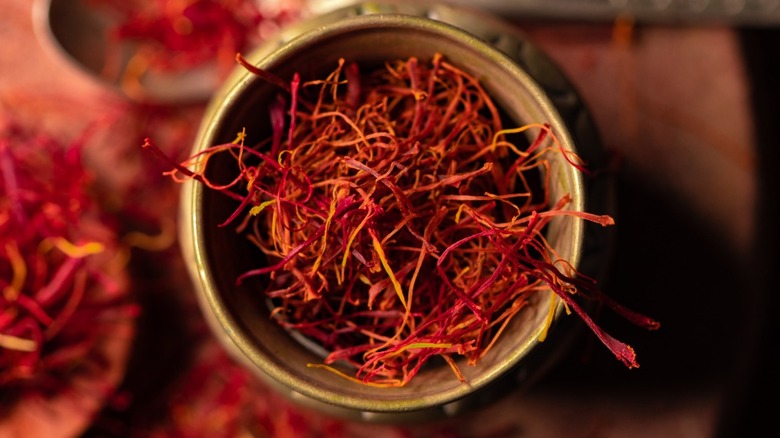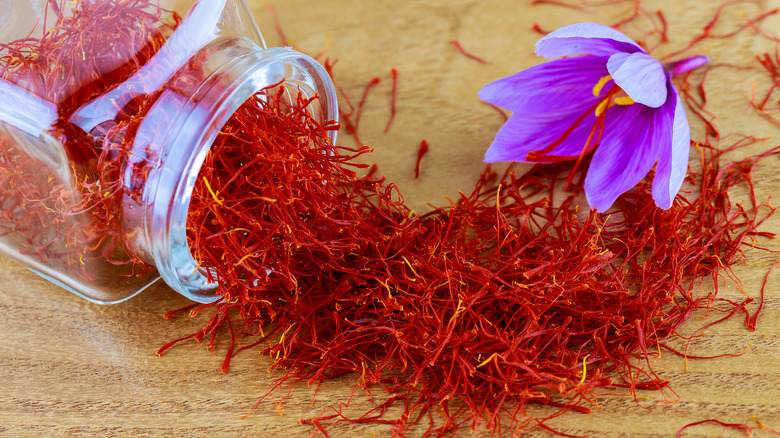The Real Reason Saffron Is So Expensive
Supply and demand determine costs (although technically it's quite a bit more complicated than that), and there perhaps never was a more dramatic demonstration of these microeconomic principles as the beautifully fragrant and wildly expensive saffron. Saffron is noted for its beautifully unique color pallet and the fact that pound for pound, saffron is more valuable than gold — and it's prettier as well.
Crocus sativus is a flowering plant used primarily as a spice in foods like paella, curries and in an incredibly wide range of cuisines, in particular Spanish, Middle Eastern, and South Asian, per MasterClass. Today, Iran leads the way in saffron production, but other countries also cultivate the flowers, including Spain, France (via Britannica), and even the United States.
Saffron has been traded for thousands of years and its value has developed into legend. From ancient Assyrian royal courts to Michelin-starred restaurants, saffron's beauty and flavor have long been renowned, making it incredibly expensive. Depending on the state of the market, Insider reports that one pound of saffron can cost upward of $5,000 per pound. Further, due to its biologically difficult nature, these prices can fluctuate with every growing season and every harvest.
Here's why saffron is so expensive
The saffron flower has gorgeous deep purple petals with bright red stigmas sprouting from the base of the flower, creating a striking color contrast. It's these delicate crimson towers that weigh this particular flower heavier than both roses and gold. The demand for saffron may be high, but the supply is singularly difficult to maintain: the reason why saffron is so expensive.
Per the BBC, saffron's harvesting methods are as ancient as people's taste for it. Each flower must be carefully handled lest the little bars of red gold break, and this process of separating flowers from stigma must be done by hand. Additionally these stigmas are tiny and it takes approximately 170,000 flowers to harvest just one pound of saffron. Because the yield is low — meaning it takes a lot of people to harvest even a little — saffron becomes harder to come by, which drives its prices up.
On top of all these factors, humidity and other conditions are especially important to cultivating quality saffron, and even too much direct sunlight can effectively damage the stigmas and destroy the product. All of these unpredictable factors coupled with labor-intensive harvesting methods come together to crown saffron as the world's most expensive spice.

